Steel Products Prices North America

Regional Imports Through September: Coiled Plate
Written by Peter Wright
November 16, 2020
National level import reports do a good job of measuring the overall market pressure caused by the imports of individual products. The downside is that there are huge regional differences. This report examines coiled plate imports by region through September 2020.
![]()
In September year to date, coiled plate imports were down by 34.2 percent at the national level, but on a regional basis ranged from a 65 percent increase in the North Pacific ports to a 78 percent decline in the Gulf region. The Great Lakes receives by far the most tonnage and accounts for 78 percent of the national total. Tonnage into both Atlantic coast regions and the North Pacific was less than 10,000 tons each for the year.
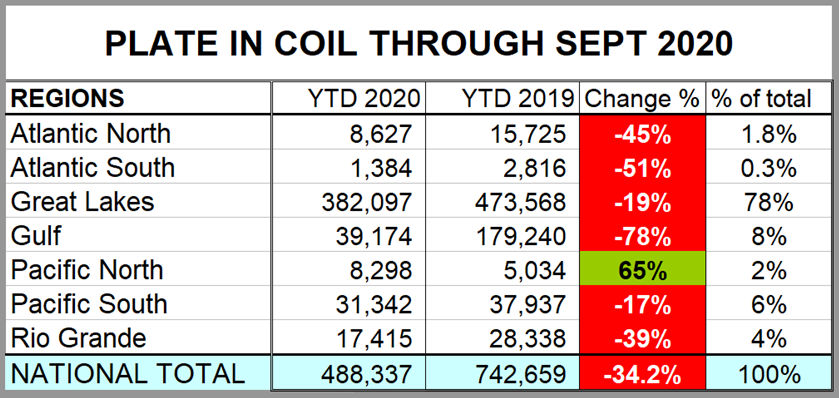
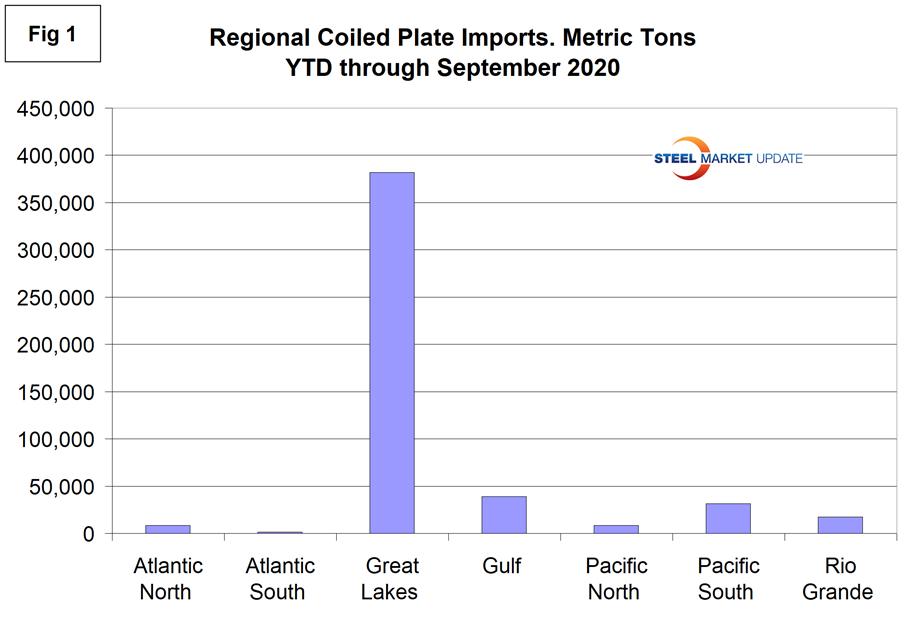
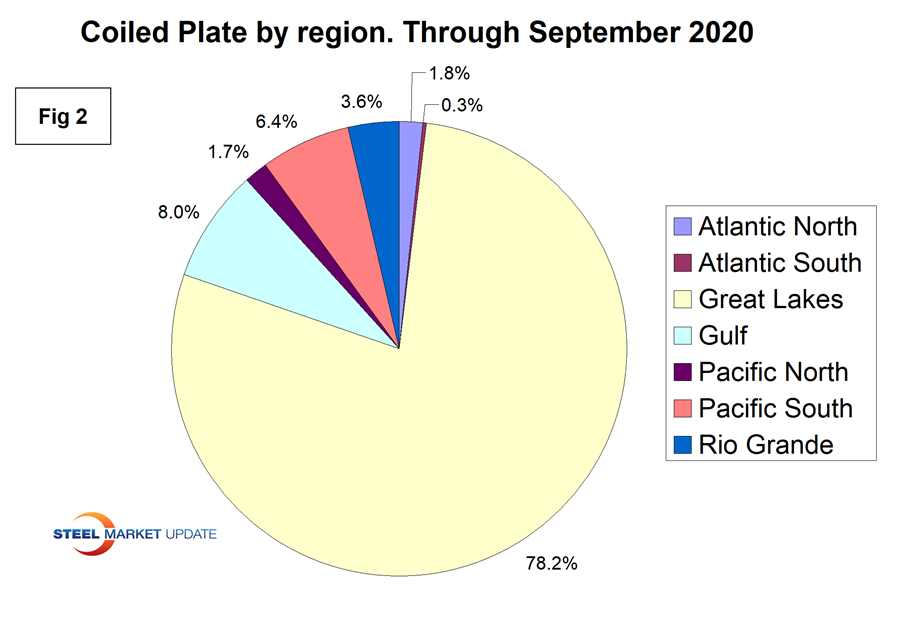
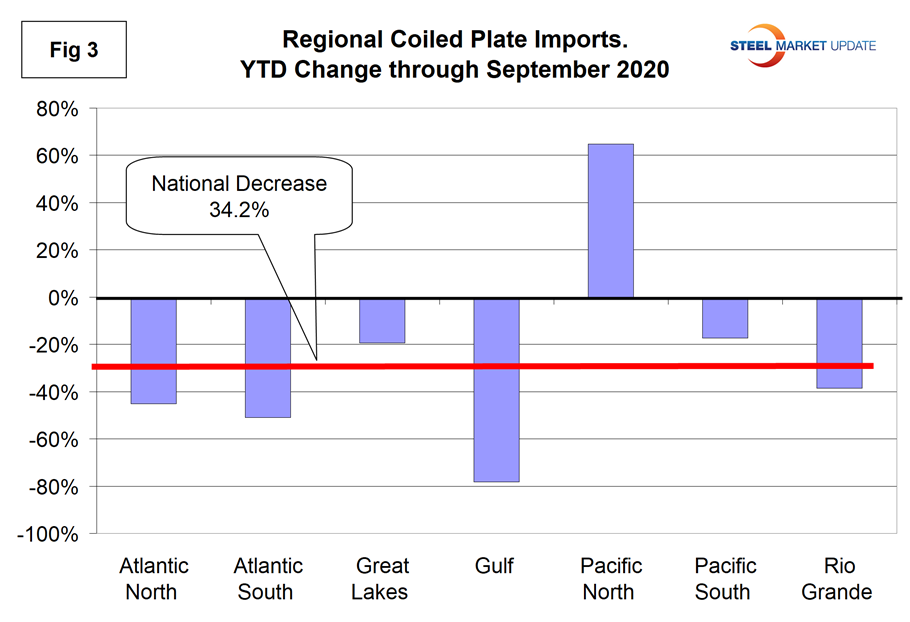
Note the tonnage scales on the Y axis of Figures 4-7 are not the same.
Pacific Coast: The tonnage into the North Pacific ports has declined to almost zero this year and in the South has been erratically declining since April 2018. The whole West Coast has only accounted for 8 percent of the national total this year.
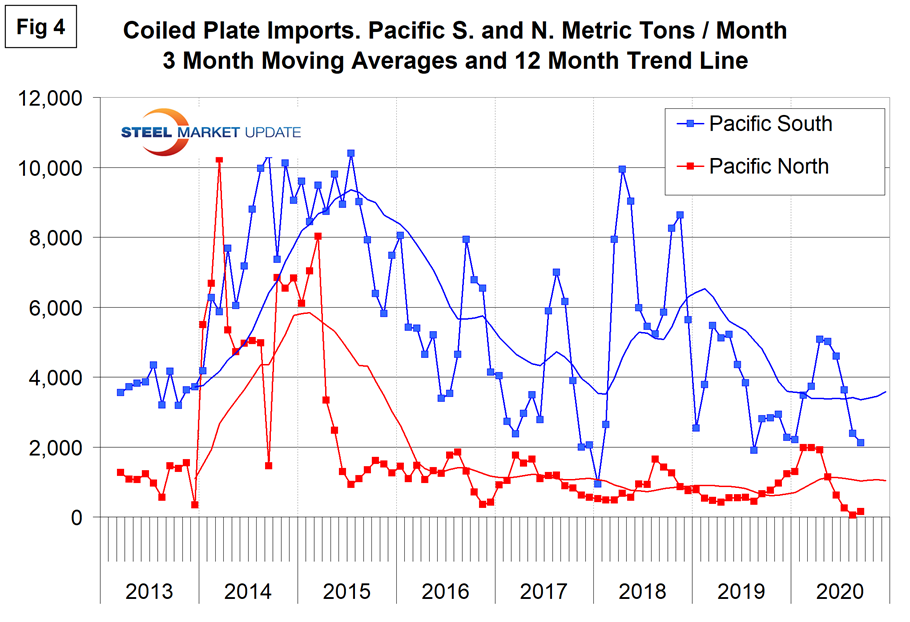
Atlantic Coast: The tonnage into the South Atlantic region was only 0.3 percent of the national total for the year and the North Atlantic only accounted for 1.8 percent. Tonnage into the North has been extremely erratic since 2013, with the South Atlantic being consistently very low.
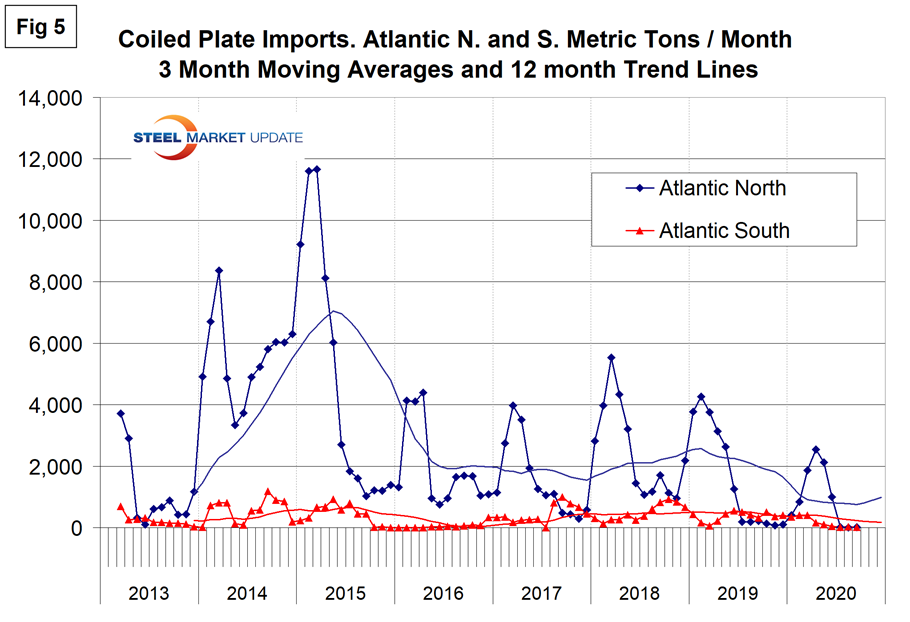
Gulf and Great Lakes: Almost all of the Gulf tonnage has entered through Houston with New Orleans only receiving 34 tons this year. The whole of the Gulf only accounted for 8 percent of the national total this year. The Great Lakes accounts for by far the greatest proportion of the national total with 78 percent this year entering through those ports.
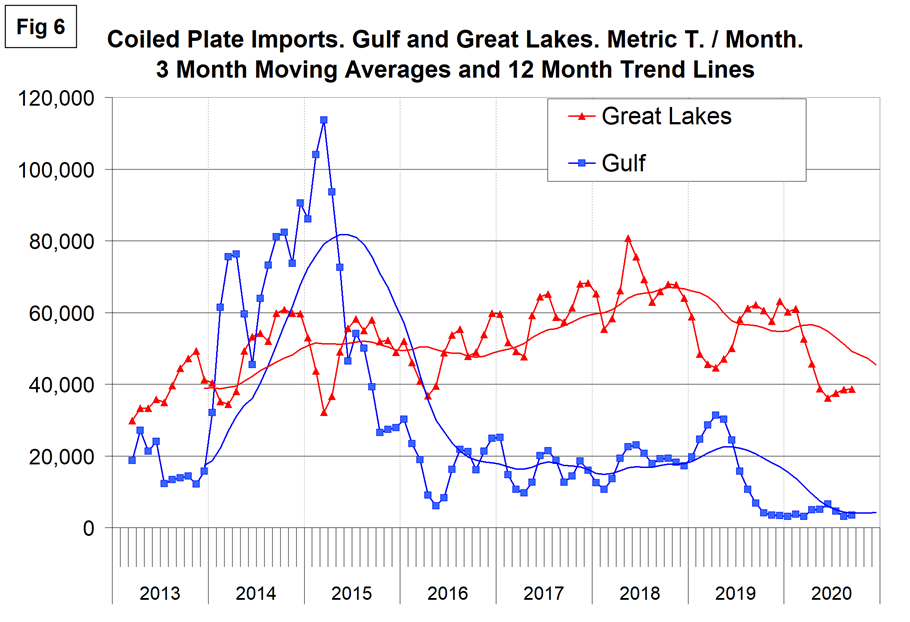
Rio Grande: Only 4 percent of the national total has crossed the river this year. Tonnage declined to only a thousand tons per month in 2019 and stayed at that level through April this year. Tonnage picked up to 4,000 tons per month in May through July, but has declined to around 1,000 tons since then.
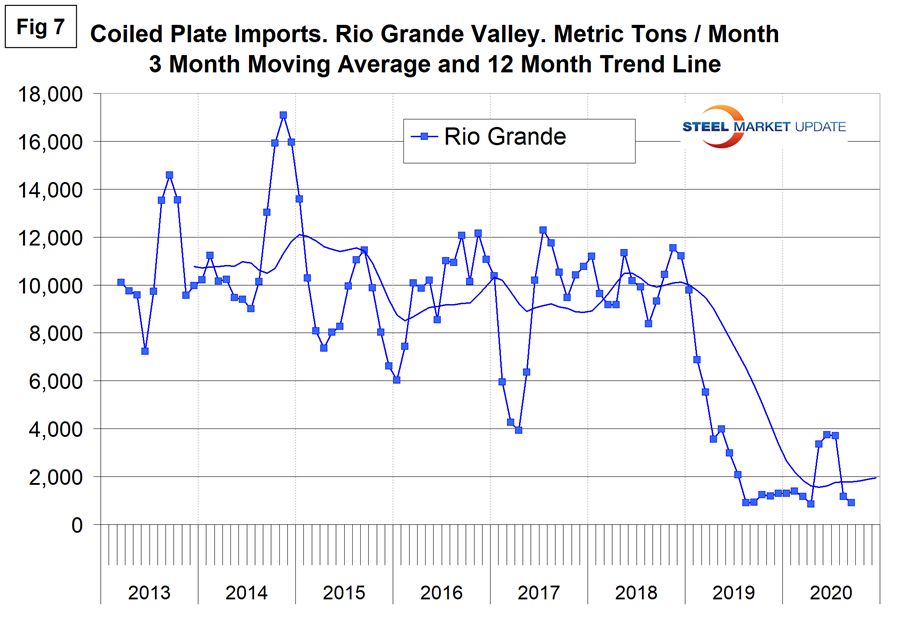
Notes: SMU presents a comprehensive series of import reports ranging from the first look at licensed data to a detailed look at volume by district of entry and source nation. The report you are reading now is designed to plug the gap between these two. This report breaks total year to date import tonnage of six flat rolled products into seven regions and the growth/contraction for each product and region. There is a summary table for each product group and a bar chart showing volume by region for the first seven months of 2020. These are reference documents with no specific comments. These charts have been developed as a guide for buyers and sellers to have a broader understanding of what’s going on in their own backyard.
Regions are compiled from the following districts:
Atlantic North: Baltimore, Boston, New York, Ogdensburg, Philadelphia, Portland ME, St. Albans and Washington. DC.
Atlantic South: Charleston, Charlotte, Miami, Norfolk and Savannah.
Great Lakes: Buffalo, Chicago, Cleveland, Detroit, Duluth, Great Falls, Milwaukee, Minneapolis and Pembina.
Gulf: Houston, New Orleans, Mobile, San Juan, St. Louis and Tampa.
Pacific North: Anchorage, Columbia Snake, San Francisco and Seattle.
Pacific South: Los Angeles and San Diego.
Rio Grande Valley: Laredo and El Paso.

Peter Wright
Read more from Peter WrightLatest in Steel Products Prices North America

SMU Price Ranges: Sheet and plate steady ahead of Independence Day
Sheet and plate prices were little changed in the shortened week ahead of Independence Day, according to SMU’s latest check of the market.

Nucor maintains plate prices, opens August order book
Nucor aims to keep plate prices flat again with the opening of its August order book.

Nucor CSP remains level at $900/ton
Nucor maintained its weekly list price for hot-rolled (HR) coil this week, following two consecutive increases.

Cliffs raises prices, seeks $950/ton for July spot HR
Cleveland-Cliffs plans to increase prices for hot-rolled (HR) coil to $950 per short ton (st) with the opening of its July spot order book. The Cleveland-based steelmaker said the price hike was effective immediately in a letter to customers dated Monday.

HRC vs. prime scrap spread widens in June
The price spread between HRC and prime scrap widened in June.
